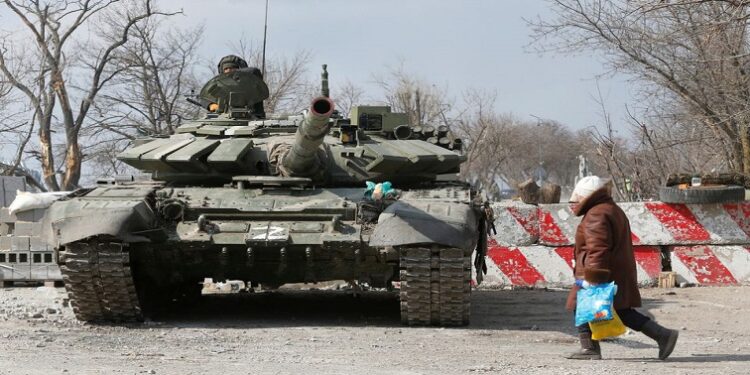Six months after shells stopped raining down on the strategic port city of Mariupol, Galina Shevtsova and her husband Pavel are living in the dark, dank basement of their apartment block – a torch illuminating belongings and mattresses piled on the floor.
They can no longer live in their apartment six floors up: it was destroyed – as many people’s homes in the city were – during weeks of ferocious fighting between Russian and Ukrainian forces vying for control of the city.
Since March, the Shevtsovs have spent their nights underground. By day, they shower and cook on open fires in the courtyard outside the building, which is also littered with people’s belongings. Their plight is not uncommon: half a year after the fighting ended – marked by the final surrender by Ukrainian troops of the city’s vast Azovstal steelworks – the situation in Mariupol remains difficult.
Russian-Ukraine | Civilians evacuated from Mariupol: May 2, 2022
Six months on, emotions are still raw: some have been left without their homes and left to fend for themselves.
“What have I turned into? I’m the last bag lady. I don’t like myself…how I look,” Shevtsova says, fighting back tears.
It is unknown exactly how many people decided to stay in Mariupol which had a population of around 450,000 before Moscow sent troops into Ukraine in February as figures provided by Russia and Ukraine differ starkly.
According to a statement by Denis Pushilin, leader of the self-proclaimed Donetsk People’s Republic which Russia annexed in September and declared Russian territory over 200,000 people were living in the city after the fighting ended.
Ukraine says less than half that number now call Mariupol home.
As winter begins to bite, a lack of central heating is a key issue in the city. According to a report by Russian Deputy Prime Minister Marat Husnullin, as of November 6, Russia had restored heating to some 60 percent of the city’s buildings.
Russia has also attempted to speed up the construction of new residential buildings in Mariupol for those left homeless by the conflict before the winter sets in.
Several newly-built residential blocks and construction machinery could be seen in the city. At least 1,348 civilians died during the fighting according to the U.N., which warned the actual number was likely to be far higher.






